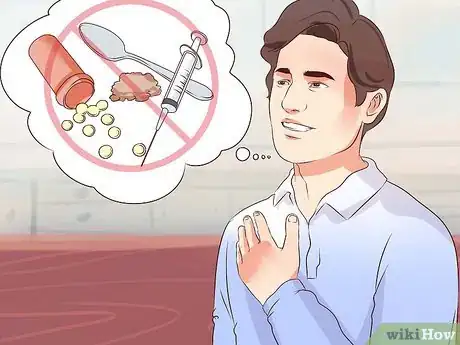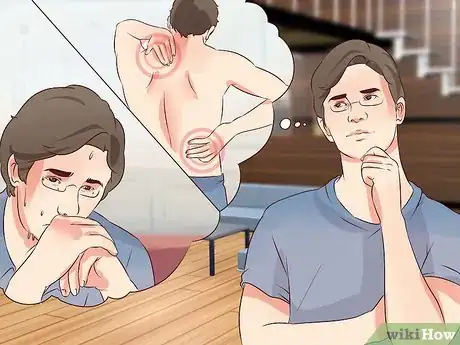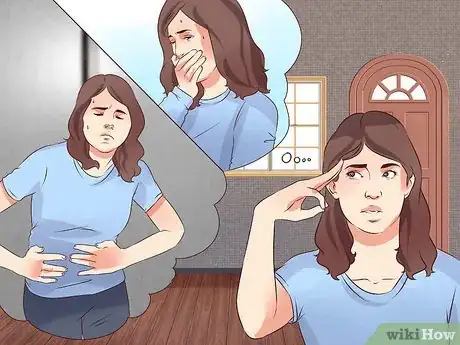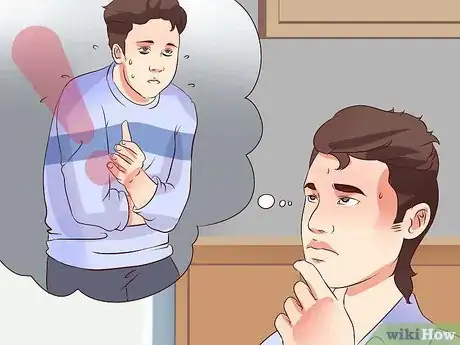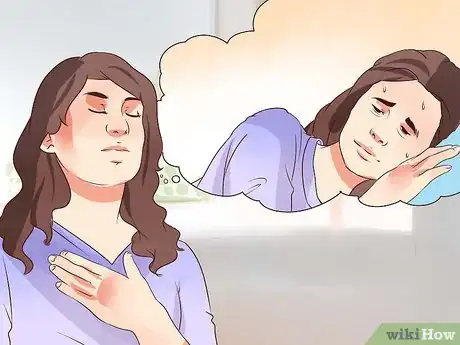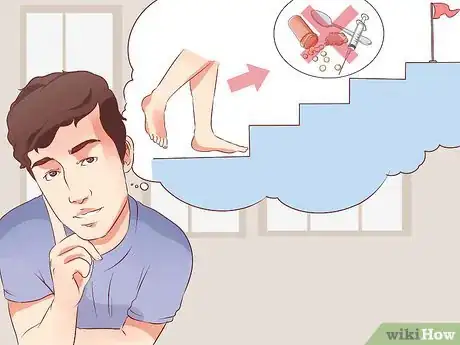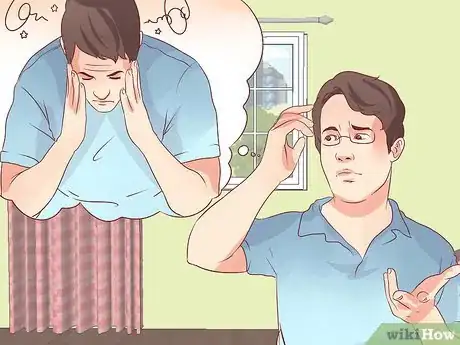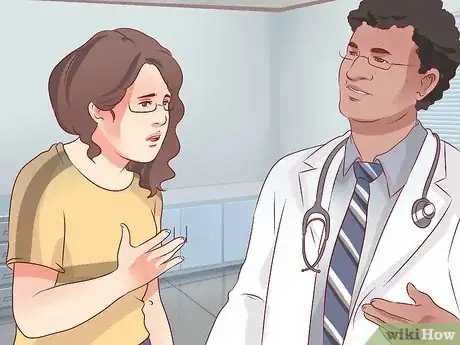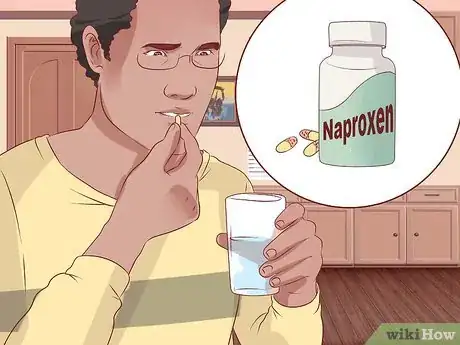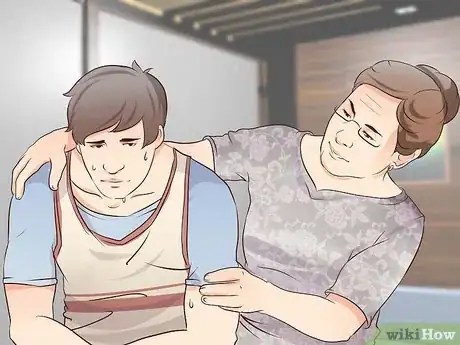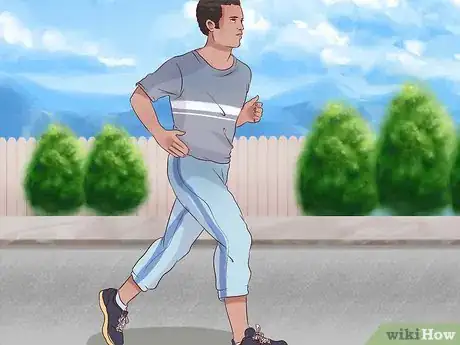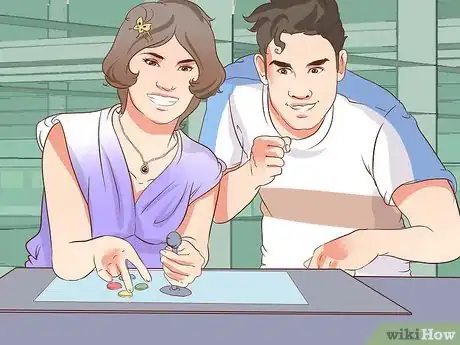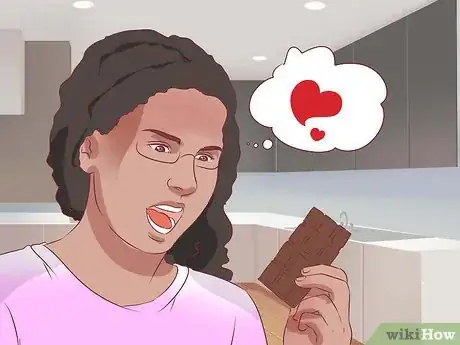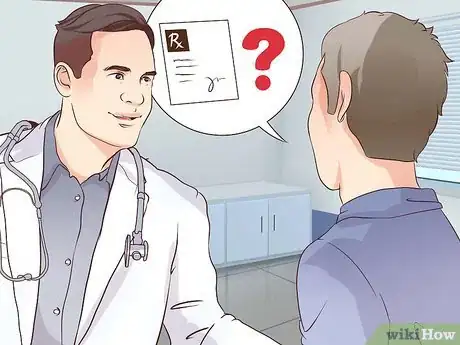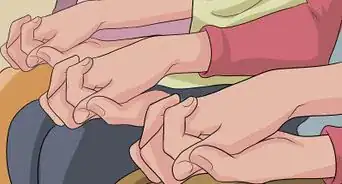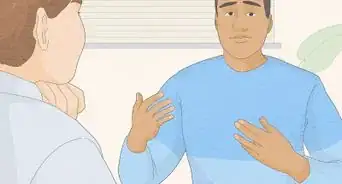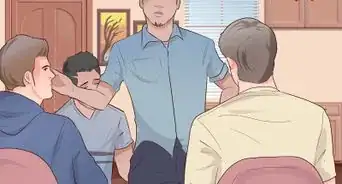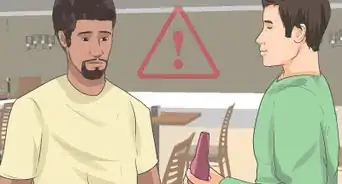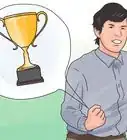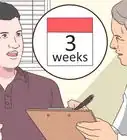This article was co-authored by Tasha Rube, LMSW. Tasha Rube is a Licensed Social Worker based in Kansas City, Kansas. Tasha is affiliated with the Dwight D. Eisenhower VA Medical Center in Leavenworth, Kansas. She received her Masters of Social Work (MSW) from the University of Missouri in 2014.
There are 13 references cited in this article, which can be found at the bottom of the page.
This article has been viewed 221,465 times.
Opiates, also known as narcotics[1] , are very powerful painkillers. Opiate addiction and tolerance can produce extremely uncomfortable symptoms if users withdraw from the drug quickly without tapering down slowly. Even for those who are tapering off an opiate, withdrawal can sometimes be extremely difficult to deal with. There are, however, ways to soothe, if not stop, uncomfortable withdrawal symptoms. Of course, as with any medical issue, clear any withdrawal treatments with your doctor prior to use.
Steps
Getting in the Mindset
-
1Believe you can endure. If your task seems impossible, you will feel fatigued and may be more likely to fail. Remind yourself that you will not be alone in this struggle – withdrawal should only be attempted after consulting with your doctor. You may need to enter a detox or rehabilitation program to make sure you are safe and your symptoms are treated during the process.
- To encourage the belief that you can succeed, try to remind yourself about other personal struggles you have overcome.
-
2Repeat to yourself that the pain won't last forever. The painful symptoms of withdrawal are temporary. There is light at the end of the tunnel. Remind yourself of this before you attempt to endure the pain of withdrawal, and continue to remind yourself during withdrawal.[2]
- Write notes to yourself reminding yourself that the pain is temporary. Put one on your refrigerator and one on your mirror, or any other places in your house you frequent.
- Also try reminding yourself that people endure the pain of opiate withdrawal all the time. Knowing that others before you have been successful can give you hope – you can do it, too.
Advertisement -
3Learn about the early symptoms you might experience. There are several kinds of pain you may need to endure when going through opiate withdrawal. These are most likely to occur around 8-12 hours after stopping the drug (peaking at 72 hours). These may include:[3]
- Agitation
- Anxiety
- Muscle aches
- Increased tearing
- Insomnia
- Runny nose
- Sweating
- Yawning
-
4Learn about the late symptoms you might experience. These are most likely to first appear 24-36 hours after last use of opiates (peaking at 72 hours). There are several:[4]
- Abdominal cramping
- Diarrhea
- Dilated pupils
- Goose bumps
- Nausea
- Vomiting
-
5
-
6Accept that sleep probably won't come easy. Because one symptom of withdrawal can be insomnia, it is often hardest to endure the pain of stopping opiates during the night. Unfortunately, there's not a whole lot that can be done about this without the use of drugs.
- Benadryl, an antihistamine that causes drowsiness, can be effective for some.
- If nothing else works, try a warm bath and a cup of a hot, non-caffeinated beverage before trying to sleep.
-
7Take it one step at a time. Your enduring opiate withdrawal comes one moment at a time. Keep this in mind: you only endure pain one moment at a time. Pain in the past is a memory and future pain has yet to come. Focus on the moment without thinking too much about when you will be fully recovered. Just focus on doing what you can help you to endure the pain in the moment.
-
8Watch for PAWS. PAWS stands for Post Addiction Withdrawal Syndrome. The symptoms of PAWS may appear after the initial withdrawal symptoms have passed and can last for months. Symptoms may include:[7]
- The inability to think clearly
- Trouble concentrating
- Impaired reasoning
- Repetitive and constrained thinking
- Memory loss; short term, long term or both
- Emotional volatility or emotional numbness
- Sleep disturbances
- Motor issues such as problems balance or slow reflexes
Lessening the Pain of Withdrawal
-
1Seek medical assistance. This can mean creating a taper plan with your doctor, booking into a long-term rehab, or even doing a short-term hospital detox. A taper plan involves professional assistance to help you taper off of your drug of choice, so that withdrawal symptoms can be medically managed. You absolutely should not attempt to taper without speaking to a doctor first.
- Attend NA groups and anything else offered for at least a year before/after withdrawal. This may help to lessen the chance of a relapse.
- Look for local resources by doing an internet search with the keywords "opiate withdrawal + help + the name of your city or zipcode".
-
2Use over the counter medications to ease symptoms. Most opiate withdrawal symptoms can be reduced through the use of over the counter medications. Speak to your physician to see if using over the counter medications would be a good option for you.
- Drugs like ibuprofen and naproxen can help to relieve pain.
- Imodium and other antidiarrheals can sometimes help to reduce gastrointestinal problems.[8]
- Take a hot bath. Add some epsom salts for an added boost of pain relief. It is not uncommon for detoxes and rehabs to have epsom salts on hand for this very reason.
- Saunas can also be good, but you must be very careful not to stay in too long. When in withdrawal, your body is already weakened and you may be dehydrated; falling asleep in a hot tub or sauna can be disastrous when in this state.
-
3Get emotional support. The support of understanding people can greatly aid you in your fight to endure the pain of opiate withdrawal. Spend as much time as possible with a partner, family member, friend, or all of these people at different times, as you go through opiate withdrawal. Be sure you spend time with people who genuinely care for you unconditionally; pick those who will be there for you in your time of need.[9]
- If you do not have any loved ones nearby or would prefer to keep your addiction secret, get the support of a good counselor to help you endure the pain.
-
4Get in light exercise. Go for a jog but don't push yourself too hard if you are extremely sore. Even light stretching can be helpful. Research has shown that exercise triggers endorphins, the body's natural opiate system. Many recovered addicts have reported that exercise helped them to feel better, if only for a short time.[10]
- Try listening to some music that pumps you up and helps you to continue your workout. Be sure, though, to listen to your body and not push yourself too hard!
-
5Enjoy entertainment. Spend time getting your mind off of your symptoms by engaging in highly entertaining activities. Playing video games, reading, listening music, watching a movie, or having a friend around to distract you can all be helpful.
- Try to get lost in the activity you are enjoying. If possible, put your clocks away, as keeping track of time may keep you from being fully immersed in the moment.
-
6
-
7Avoid alcohol, caffeine, and tobacco. As you endure the pain of opiate withdrawal, be careful not to substitute one addiction with another. Avoid other addictive substances as much as possible while experiencing withdrawal.
-
8Reward yourself. You thought about giving into the pain and using again but you didn't. Positively reinforce this behavior by treating yourself to something you really enjoy. This could be your favorite chocolate, something you've really wanted to buy for yourself but haven't yet, or your favorite food. Also reflect on your accomplishment and be proud of yourself for overcoming something that is very difficult
-
9Ask your doctor to recommend a prescription. The doctor assisting you during your withdrawal may have suggestions for prescriptions you can take to help lessen withdrawal symptoms. If she thinks it is a good idea she may prescribe one of the following drugs:
- Clonidine[13] : Clonidine alters how the sympathetic nervous system functions (the part of the nervous system responsible for the fight or flight response). [14] It can help to lessen several symptoms of opiate withdrawal, making enduring withdrawal easier.
- Buprenorphine[15] : This drug will help to stop withdrawal symptoms. However, it can be dangerous and it is important to carefully follow your doctor's instructions if prescribed.
- Methadone[16] : Consider getting treated with methadone, a less addictive alternative whose habit is easier to kick. Methadone can be effective, studies show, although depending on where you live there may be restrictions for who can get on it. Be sure to ask your doctor whether you qualify, should you choose to pursue this option.[17]
References
- ↑ http://dictionary.reference.com/browse/opiate
- ↑ https://medlineplus.gov/ency/article/000949.htm
- ↑ https://www.nlm.nih.gov/medlineplus/ency/article/000949.htm
- ↑ https://www.nlm.nih.gov/medlineplus/ency/article/000949.htm
- ↑ https://www.nlm.nih.gov/medlineplus/ency/article/000949.htm
- ↑ https://www.nlm.nih.gov/medlineplus/ency/article/000949.htm
- ↑ https://www.semel.ucla.edu/dual-diagnosis-program/News_and_Resources/PAWS
- ↑ http://www.nhs.uk/Conditions/Gastroenteritis/Pages/Treatment.aspx
- ↑ https://www.helpguide.org/harvard/opioid-addiction.htm
- ↑ http://www.mayoclinic.org/healthy-lifestyle/stress-management/in-depth/exercise-and-stress/art-20044469
- ↑ https://www.cmha.bc.ca/get-informed/mental-health-information/improving-mh
- ↑ http://www.hc-sc.gc.ca/fn-an/food-guide-aliment/choose-choix/index-eng.php
- ↑ http://www.mayoclinic.org/drugs-supplements/clonidine-oral-route/description/drg-20063252
- ↑ http://alcoholrehab.com/drug-addiction-treatment/clonidine-for-heroin-rehabilitation/
- ↑ http://www.aafp.org/afp/2006/0501/p1573.html
- ↑ http://www.aafp.org/afp/2001/0615/p2404.html
- ↑ http://www.aafp.org/afp/2001/0615/p2404.html
